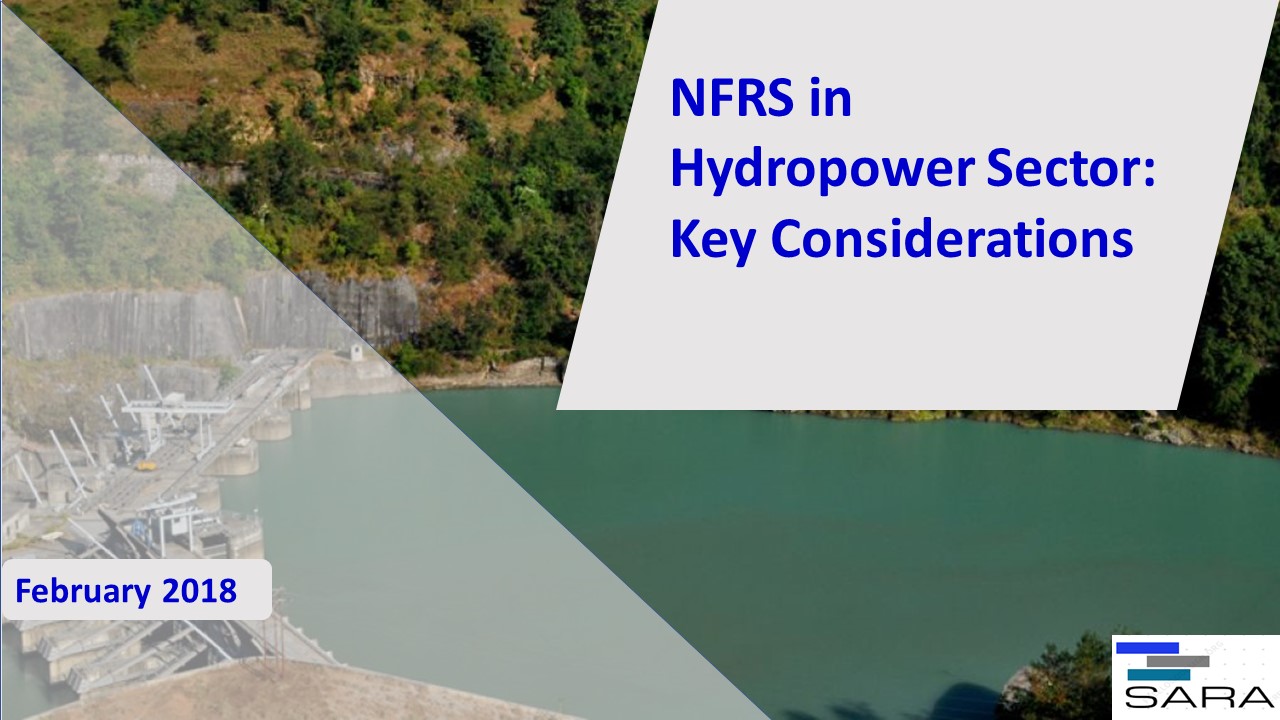
Nepal has a huge hydropower potential. The perennial nature of Nepali rivers and the steep gradient of the country’s topography provide ideal conditions for the development of some of the world’s largest hydroelectric projects in Nepal. Utilities industries which are into generation, transmission and distribution are governed by prevailing company laws.
In terms of accounting and reporting, Nepal Accounting Standards were followed till 2015. With the issuance of roadmap by the accounting regulator, Institute of Chartered Accountants of Nepal, for the entities requiring adoption of NFRS, many entities have put efforts to diagnose the major impacts from the adoption of NFRS.
The key areas of discussion for NFRS adoption in hydropower sector: Fixed Assets and components
NFRS has a specific requirement for “component” depreciation, as described in NAS 16, Property, Plant and Equipment. Each significant part of an item of property, plant and equipment is depreciated separately. Significant parts of an asset that have similar useful lives and patterns of consumption can be grouped together. This requirement can create complications for utility entities, as many assets include components with a shorter useful life than the asset as a whole.
Borrowing cost
The cost of an item of property, plant and equipment may include borrowing costs incurred for the purpose of acquiring or constructing it. NAS 23 requires such borrowing costs to be capitalized if the asset takes a substantial period of time to get ready for its intended use. Examples of borrowing costs given by the standard are interest expense calculated using the effective interest method (described in NAS 39, Financial Instruments: Recognition and Measurement); finance charges in respect of finance leases recognised in accordance with NAS 17, Leases, and/or exchange differences arising from foreign currency borrowings to the extent that they are regarded as an adjustment to interest costs.
Impairment
The utility industry is distinguished by the significant capital investment required, exposure to commodity prices and heavy regulation. The required investment in fixed assets leaves the industry exposed to adverse economic conditions and therefore impairment charges. Utilities’ assets should be tested for impairment whenever indicators of impairment exist. The normal measurement rules for impairment apply.
Arrangements that may contain a lease
NFRS requires that arrangements that convey the right to use an asset in return for a payment or series of payments be accounted for as a lease, even if the arrangement does not take the legal form of a lease. The classification has significant implications; a lessor in a finance lease would derecognize its generating assets and recognise a finance lease receivable in return. A lessee in a finance lease would recognise fixed assets and a corresponding lease liability rather than account for the power purchase agreement as an executory contract. Classification as an operating lease leaves the lessor with the fixed assets on the balance sheet and the lessee with an executory contract. If lease accounting is inevitable, investors sometimes prefer operating lease accounting
Decommissioning obligations
The power and utilities industry can have a significant impact on the environment. Decommissioning or environmental restoration work at the end of the useful life of a plant or other installation may be required by law, the terms of operating licenses or an entity’s stated policy and past practice. An entity that promises to remediate damage, even when there is no legal requirement, may have created a constructive obligation and thus a liability under NFRS. There may also be environmental clean-up obligations for contamination of land that arises during the operating life of a power plant or other installation. The associated costs of remediation/restoration can be significant. The accounting treatment for decommissioning costs is therefore critical.
